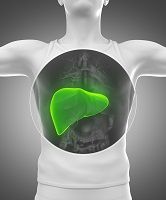Article
NAFLD Is Associated with Increased Risk for a Range of Severe Comorbidities
Author(s):
Besides being the most common cause of chronic liver disease in industrialized nations, non-alcoholic fatty liver disease has serious hepatic consequences. It is expected to be the most frequent indication for liver transplantation by 2030.

In addition to being the most common cause of chronic liver disease in industrialized nations, non-alcoholic fatty liver disease (NAFLD) has serious hepatic consequences. It is expected to be the most frequent indication for liver transplantation by 2030.
NAFLD’s impact also extends to multiple systems, organs and regulatory pathways. Patients who develop NAFLD are at significantly higher risk for type 2 diabetes mellitus (T2DM), cardiovascular (CVD) and cardiac diseases, and chronic kidney disease (CKD). The Journal of Hepatology has published a review of this topic that stresses recent insights into its whole-body effects.
Patients who have NAFLD have a doubled risk of developing T2DM, a problem that research attributes to liver fat/lipid accumulation and subsequent impairment in insulin signaling (insulin resistance). The risk for T2DM increases as NAFLD severity increases.
Should NAFLD progress to non-alcoholic steatohepatitis (NASH), risk of hepatocellular cancer increases.
It’s reasonable to think that most patients with NAFLD would die of liver disease; the actuality is that CVD is their most frequent cause of death. This confirms NAFLD’s multisystem disease status. Many NAFLD patients develop metabolic syndrome (MetS) and have multiple cardiovascular disease risk factors.
Several studies demonstrate that NAFLD is associated with cardiac structure and function abnormalities in both adolescents and in adults regardless of comorbid MetS. Of great concern are similar finding in children diagnosed with NAFLD.
NAFLD’s role in CKD is emerging. Its prevalence in patients with NAFLD has been documented to be approximately 20%—55% compared to 5%–35% in patients without NAFLD.
It remains unclear if NAFLD is a marker or a mediator of cardiovascular/cardiac diseases and CKD, but these authors tend to think it is a pathogenic factor and thus a mediator. Activation of inflammatory pathways may be the mechanism by which NAFLD becomes a multisystem disease. Better understanding of how systems work together may lead to effective pharmaceuticals.




